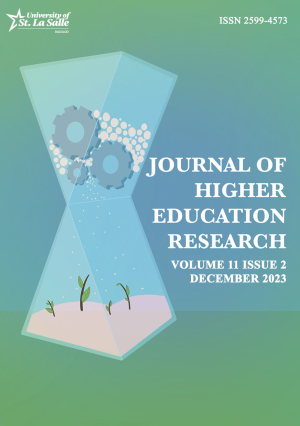Predictors of Blood Pressure Among Hypertensive Patients
https://doi.org/10.70228/YJHER2024015
Cite this article Read this article
ABSTRACT
This study investigated the predictors of blood pressure among hypertensive patients in Tangshan, northern China, utilizing a descriptive, quantitative methodology with survey questionnaires completed by 375 participants. The demographic breakdown showed equal gender distribution (50% male, 50% female), with the majority aged 50-59 (47.9%), married (97.7%), educated to high school level (72.1%), engaged in manual labor (92%), and earning less than 5,000 RMB monthly (53%). Notably, a significant portion had comorbid conditions such as diabetes, nephropathy, or hyperlipidemia. Key lifestyle factors identified included high rates of overweight individuals (60.4%), low exercise frequency (14.6%), high-fat and high-salt diets (80.9% consuming 6-12 grams of salt daily), and poor medication adherence (34.5%). Through multiple linear regression analysis, significant predictors for systolic blood pressure were identified as medication adherence, diabetes mellitus, exercise, and smoking. In contrast, for diastolic blood pressure, significant predictors included medication adherence, age, and high-fat diet. Gender stratification revealed income as an additional predictor for males and a sedentary lifestyle and smoking for females. The study emphasizes the need for intensified health education, family support for treatment belief, and improved medication adherence, particularly for low-income groups. It recommends regular monitoring for patients with diabetes, kidney disease, and hyperlipidemia, alongside lifestyle modifications (weight control, low-sugar and low-fat diets, and increased exercise). A program has been proposed to highlight dietary changes, lifestyle adjustments, and drug compliance to address such findings.
Keywords: predictors, blood pressure, hypertensive patients

Volume 11 Issue 2, 2023 EDITION
Published 2023
Editor's Note
Dear Readers, We are pleased to present the Volume 11, Issue 2 (2023) of the Journal of Higher Education Research. This issue brings together a diverse collection of studies that address significant topics in education, healthcare, and well-being, showcasing research that is both relevant and impactful. This issue includes studies that highlight the importance of psychosocial factors in learning and practice. Cao and Espinosa examine how parenting styles influence study engagement among vocational nursing students, with self-compassion potentially mediating this relationship. Meanwhile, Yanling and Garcia shed light on the factors contributing to death anxiety among ICU nurses, emphasizing the need for tailored mental health interventions to strengthen the self-efficacy of ICU nurses. Similarly, Xing and Lachica highlight the growing demand for death education, pointing on the necessity of preparing nursing students for end-of-life care. From the perspective of patient care, Wang and Dolendo investigate how the fear of movement, or kinesiophobia, physical exercise and self-efficacy affect patients undergoing peritoneal dialysis, showcasing its impact on the quality of life of the patients. Chen and Cadena evaluate the effectiveness of a modified simulation tool to improve the skills of anesthesia nurses, emphasizing the value of hands-on training in healthcare. Mental health is another key theme in this issue. Li and Diva share the lived experiences of patients using nonpharmacological approaches to manage anxiety and depression related to chronic gastritis. This study proposes a model to assist the patients in developing appropriate behavioral adaptations and self-management skills and assess the effectiveness of strategies. Yang and Chua identify predictors of blood pressure in hypertensive patients, contributing to better hypertension management program. Lastly, two studies explore ways to enhance quality of life. Shen and Garcia investigate how square dancing improves sleep and well-being among middle-aged and older women, highlighting the importance of community-based physical activities. Song and Lachica report findings on the role of meaning in life and coping styles in supporting breast cancer patients undergoing chemotherapy. We are deeply grateful to our authors for their valuable contributions and to our reviewers for their time and expertise in refining this issue. A special thanks to the staff and Dr. Lota Largavista, Director of the Publication and Engagement Office, for their unwavering support in producing this volume. We hope you find this issue thought-provoking and useful in your professional practice and academic endeavors. Sincerely, JOVAL N. MARTINEZ Editor-in-Chief


